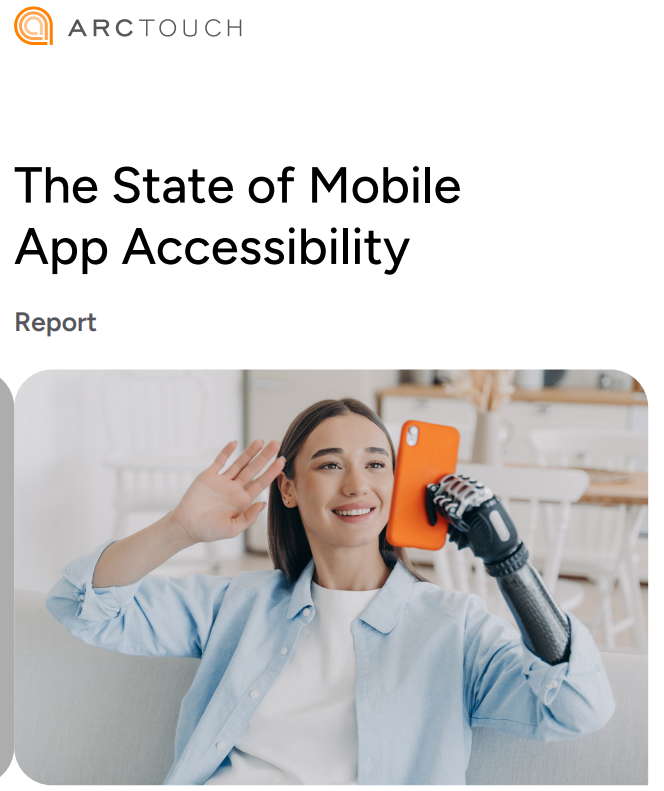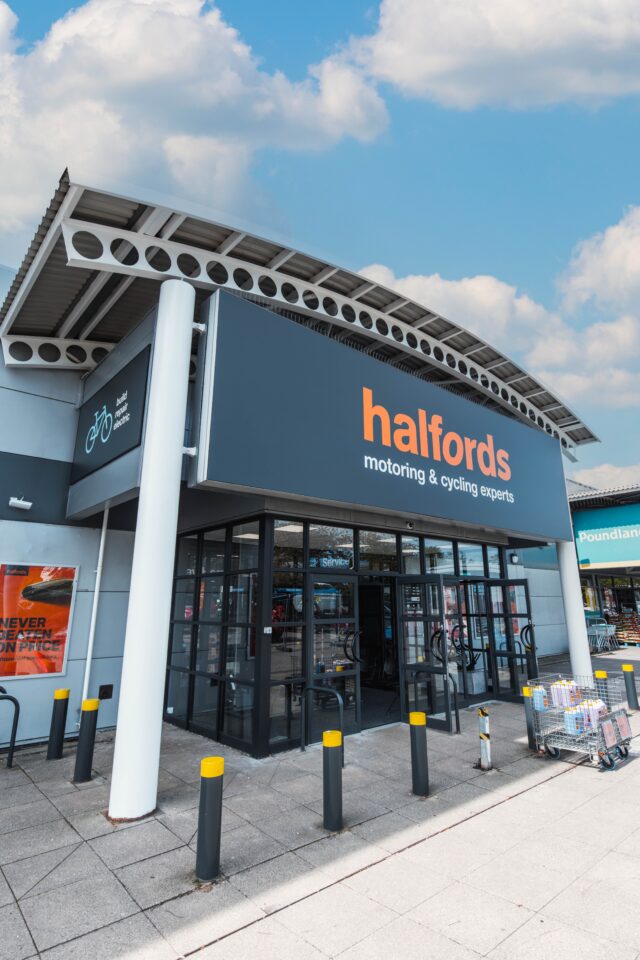April 16, 2025
State of mobile app accessibility, much more to do according to SOMAA report

With the European Accessibility Act about to kick in, more businesses need to review the accessibility of their apps. Highlighting a few good use cases and many more that could do better, The State of Mobile App Accessibility (SOMAA) report from ArcTouch explores what designers and developers need to improve on.
The report highlights the needs of the billion-plus people with some form of disability, therefore around 1/8th of the planet’s consumers, customers and prospects. Many of whom struggle with poorly laid out, inaccessible or unresponsive apps.”Over 1 billion people worldwide have disabilities, and ArcTouch’s research shows mobile apps are failing them. These apps need to connect people to important services, but they have significant accessibility problems despite existing regulations. This report spotlights critical accessibility barriers in the key user flows that people with disabilities rely on for everyday tasks. Making these improvements isn’t just about giving everyone equal access; it also helps brands reach more customers, creating both social good and business benefits.” Says Joe Devon, co-founder of Global Accessibility Awareness Day (GAAD).
The business journey to good app accessibility
The SOMAA report covers five key industries, and how their apps work for real people with accessibility issues. Test results reveal that the average score of apps across industries was “Fair”, but only two of 50 apps tested achieved “Great” accessibility, while nine received a “Failing” grade. That’s a whole lot of “could do better” for brands failing to deliver banking services, food deliveries and personal fitness, among others. And with only 25% of companies ready for the EAA, there’s a lot to do before it comes into law on the 28th June.

Highlights of the report include the value of accessibility due to, “the business case for creating accessible digital experiences. Building accessible apps and websites is not just the right thing to do; it’s a strong business strategy. For too long, accessibility was viewed as an optional add-on, a “nice-to-have.” Today, the business case is undeniable.” And if you disagree with that, EU lawyers will soon likely be on your case if you do business in their territory.
The key issue for app builders is how the customer journey is the perfect map for your accessibility efforts, with accessibility as vital in the initial focus alongside security and privacy. That’s as the cost of retro-fitting and rebuilding apps for accessibility will cost much more than doing it properly in the first place. The report also notes that, “The market for accessible apps is not a niche segment; it’s everyone. In a recent blog post, Forrester Research highlighted the “curb-cut effect,” where accessibility features designed for a specific group end up benefiting a much broader audience.”
The shopping industry is a terrible example
Online retail, which has the most direct potential for increased revenue through accessibility, performed the worst according to the report. It highlights a significant missed opportunity with failures including a lack of screen orientation support, screen reader usability, and poor alternate navigation generating focus and other issues.
Among the key highlights or lowlights, support for landscape mode is almost non-existent, a significant barrier for users with limited mobility and low vision.
Talking accessibility with ArcTouch CEO Adam Fingerman
ArcTouch’s CEO Adam Fingerman, has spent his web and app design career building accessibility into products from day one, and is proud of his team’s efforts in creating this report. He talked to CXM about the issues he sees and the road to better accessibility performance from businesses.
Where does the problem with apps lacking accessibility begin?
Developers and designers often aren’t thinking about accessibility up front, they need to infuse it in their processes from the very beginning. Just as there’s a business focus on QA, data and security assurance, accessibility needs to be part of the thought process. Drumming that necessity into them, business leaders should focus on and identify the value that is (or, can be) unlocked by accessibility-first brands. Taking an accessibility-first approach will deliver value from more completed sales, happier customers and new business.
Is there hope for better apps through general iOS and Android user interface and accessibility features?
The OS gets you part of the way there, typically with font scaling, focus and landscape switching, but developers don’t get it for free and it would be tough to mandate across all apps successfully. To varying degrees, we’ve found that some apps take advantage, some don’t. The important takeaway for developers and product leaders is that accessibility doesn’t just happen in their apps. They need to be intentional in their support of assistive technologies. The operating systems provide the building blocks, but it’s up to the app developers to assemble them properly. And the results from our SOMAA report show that we all need to try harder.
Will accessibility improve after the EAA comes into effect and what methods will companies use to ensure compliance?
Most businesses do or will deliver accessibility as an extension of their existing policies (see ArcTouch’s own as a clear example), with a clear explanation of goals and responsibilities. For consumers and users, accessibility needs to be explained and demonstrated up front, and work consistently with the rest of the app or service. At ArcTouch, the goal is a “lovable product”, one that customers get happiness from every time they use it.
Will AI and low-code development tools make apps better or worse?
It is really too early to tell, there are already some useful examples of AI and improved access, such as generated alt-text for images. We’re helping a low-code development tool partner with refining their accessible output, highlighting that these types of app creation tools are not a do-it-all solution yet if you want to serve the widest possible audience. And while AI could help empower the creator community by pushing accessibility options higher up into design consideration, it could create inconsistent results.
The use of voice and conversational AI is also good for some use cases, such as simple user journeys and microtransactions, but with greater complexity (multiple items in a food order, for example) will see a need for multi-modal interactions.
Whatever the early results post-EAA, there’s clearly plenty for brands and designers to do around all areas to make apps accessible, and we can’t wait to see the positive results.



